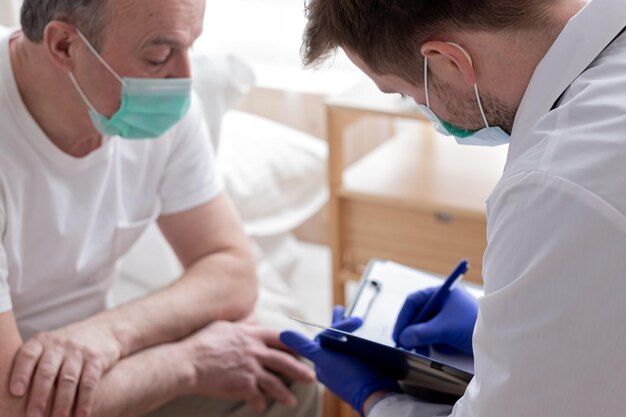How to Detect Lyme Disease: A Comprehensive Guide to Early Diagnosis and Next Steps
Lyme disease, a stealthy invader transmitted primarily through tick bites, can pose a significant health risk if left unchecked. Frequently contracted in the United States and parts of Europe, the onset of Lyme disease can range from mild to severe, impacting the quality of life if not detected early. But fear not! Understanding how to check for Lyme disease effectively can empower you to take timely action and mitigate its effects. Let's delve into a detailed exploration of how to identify this disease, the symptoms to watch for, and what steps to take next.
Understanding Lyme Disease: The Basics
What is Lyme Disease?
Lyme disease is an infectious disease caused by the bacterium Borrelia burgdorferi. It is primarily transmitted to humans through the bite of infected black-legged ticks, commonly known as deer ticks. The condition is most prevalent during the warmer months when ticks are more active. Early detection is crucial as it can prevent more severe symptoms that manifest if the disease progresses untreated.
The Importance of Early Detection
Early diagnosis is essential to prevent long-term complications, which could include chronic joint inflammation, neurological disorders, and heart issues. Identifying the disease in its nascent stages means that treatment can be started promptly, minimizing potential damage and ensuring a quicker recovery.
Recognizing the Symptoms of Lyme Disease
Early Signs and Indicators
The symptoms of Lyme disease can be elusive, often mimicking other conditions. However, there are certain hallmarks of the disease you should be aware of:
- Erythema Migrans (EM) Rash: Often known as the "bull's-eye" rash, it can appear 3-30 days after a tick bite. It's typically red, expanding, and can reach a size of 12 inches or more. Not everyone with Lyme disease gets this rash, but it is a significant indicator.
- Flu-like Symptoms: Fever, chills, fatigue, body aches, and swollen lymph nodes are common in the early stages. These symptoms can easily be mistaken for a viral infection, so context is essential.
Progression and Later Stages
In some cases, if Lyme disease is not diagnosed and treated promptly, it can advance to more severe stages involving:
- Severe Headaches and neck stiffness.
- Additional EM Rashes on other parts of the body.
- Arthritis with severe joint pain and swelling, particularly in the knees and other large joints.
- Neurological Symptoms including facial palsy, numbness, tingling, or even memory problems.
- Heart Issues, such as an irregular heartbeat.
Methods for Checking Lyme Disease
Self-Examination
If you've been in a tick-prone area, a thorough self-examination is crucial. Follow these steps:
- Inspect Your Skin: Pay attention to all areas, especially hidden ones like the scalp, underarms, and groin. Look for new spots or rashes.
- Look for Ticks: Especially in skin folds and areas covered by hair.
- Note Any Unusual Symptoms: If you notice flu-like symptoms post-exposure, consider their duration and intensity.
Medical Evaluation
If your self-examination raises concerns, it's wise to consult a healthcare professional. Here's what to expect:
- History and Physical Exam: The doctor will inquire about recent outdoor activities and symptoms, and examine you for any rashes or swellings.
- Laboratory Tests: Blood tests can help confirm the presence of Borrelia burgdorferi. The most common tests include:
- ELISA (Enzyme-Linked Immunosorbent Assay): Often the first choice, it measures antibodies to the bacteria.
- Western Blot Test: Used to confirm an ELISA test. It identifies specific proteins related to Lyme disease.
What to Do if You Suspect You Have Lyme Disease
Immediate Steps
- Document Symptoms: Record the onset and progress of symptoms. Pictures of any rashes can be particularly useful.
- Consult with Healthcare Providers: Early medical intervention is critical. Ensure you communicate all symptoms and potential tick exposure to your healthcare provider.
Understanding the Diagnostic Process
Being informed about what the diagnostic process entails can alleviate anxiety. After initial tests, further evaluations might be necessary if:
- Symptoms Persist: Even after negative test results.
- Co-Infections are Suspected: Ticks sometimes transmit multiple diseases. Your doctor might recommend tests for other tick-borne illnesses.
Prevention: Your Best Defense
Personal Prevention Tips
Preventing tick bites is far easier than treating Lyme disease. Follow these guidelines:
- Avoid Ticks: Stay clear of heavy vegetation and wooded areas where ticks thrive.
- Dress Appropriately: Long sleeves, pants tucked into socks, and hats can reduce skin exposure.
- Use Insect Repellents: Products containing DEET or permethrin are effective.
- Check Pets: Dogs and cats can bring ticks indoors. Regularly inspect and treat your pets.
Maintaining a Tick-Free Environment
- Yard Maintenance: Keep lawns mowed and remove leaf litter.
- Create Barriers: Using gravel or wood chips between wooded areas and recreational areas can help limit tick migration.
Concluding Insights on Lyme Disease Detection
Keeping an informed perspective on Lyme disease involves understanding the symptoms, examining your risk, and knowing when to seek medical guidance. Early detection and prevention are key. By maintaining good habits and staying vigilant, you can minimize the risk of Lyme disease impacting your health or the health of your loved ones.
Summary: Key Points for Detecting Lyme Disease 🎯
- Spot Symptoms Early: Look for rashes and flu-like symptoms.
- Check After Exposure: Conduct thorough self-examinations after being in tick-prone areas.
- Seek Medical Advice: Contact a healthcare provider if symptoms or rash appear.
- Prevent Tick Bites: Use repellents and wear appropriate clothing in wooded areas.
- Maintain Your Yard: Clear debris and keep the landscape groomed to reduce tick habitat.
By following these comprehensive guidelines, you can equip yourself with the knowledge needed to tackle Lyme disease proactively. Stay informed, stay safe, and take control of your health!
